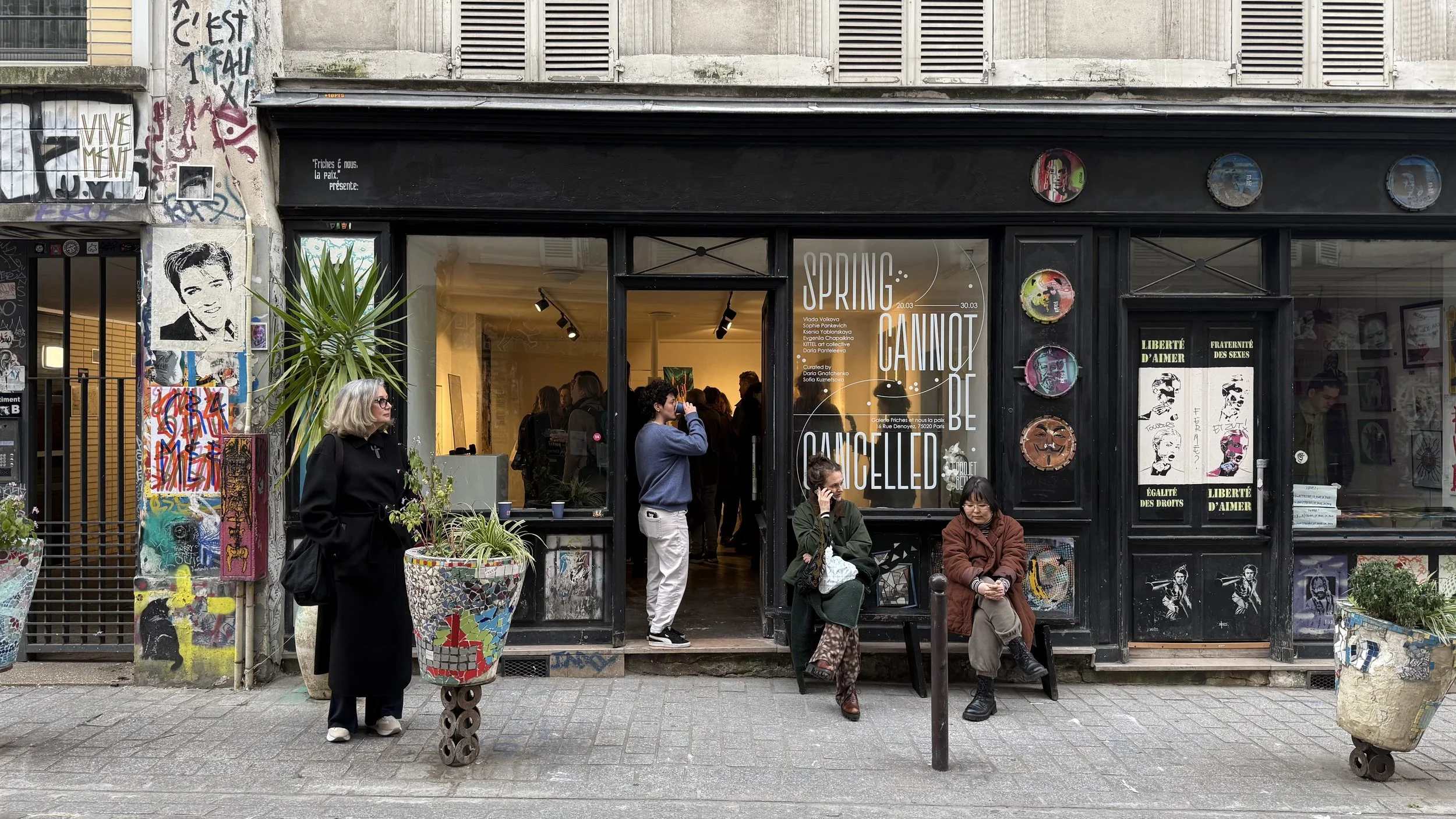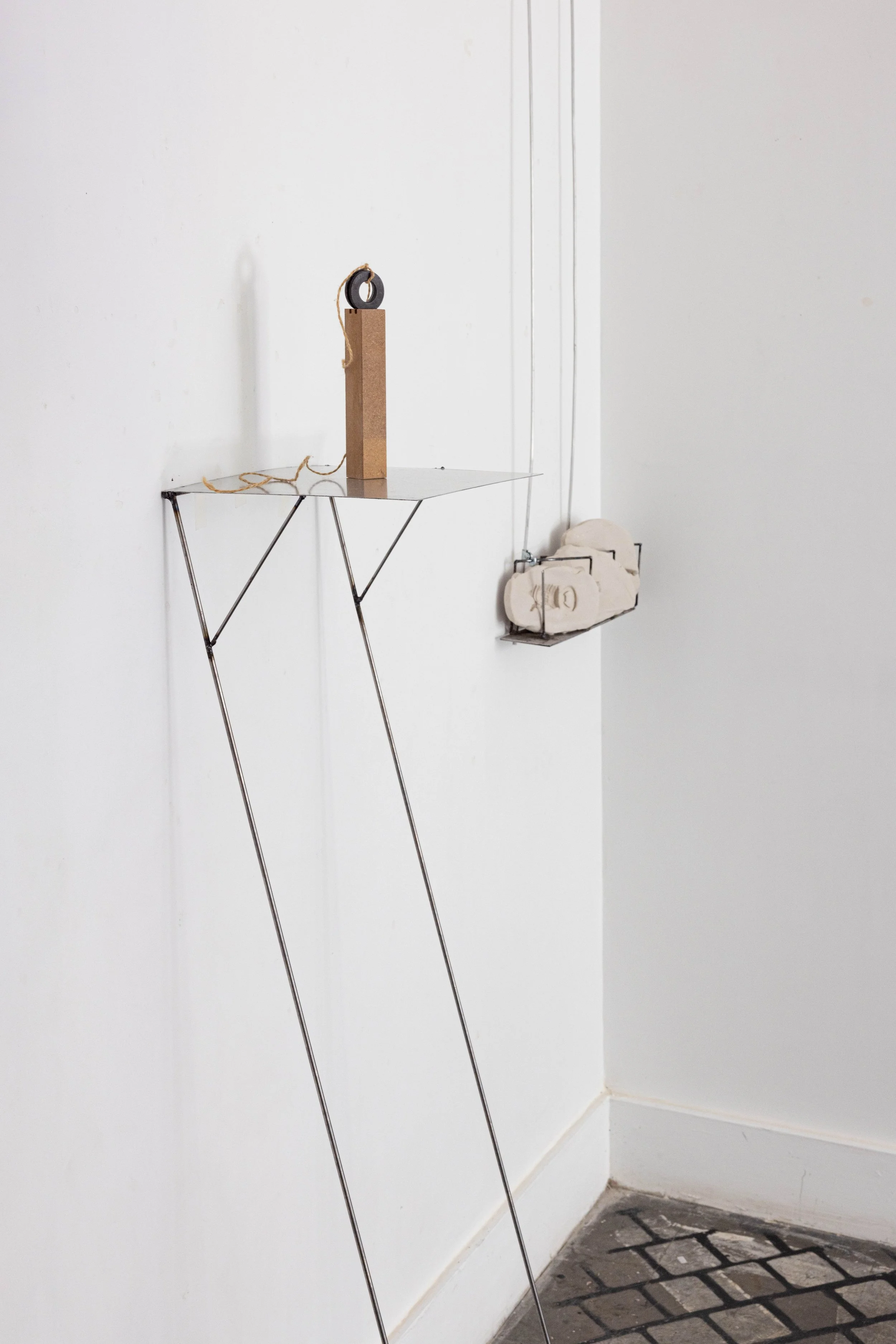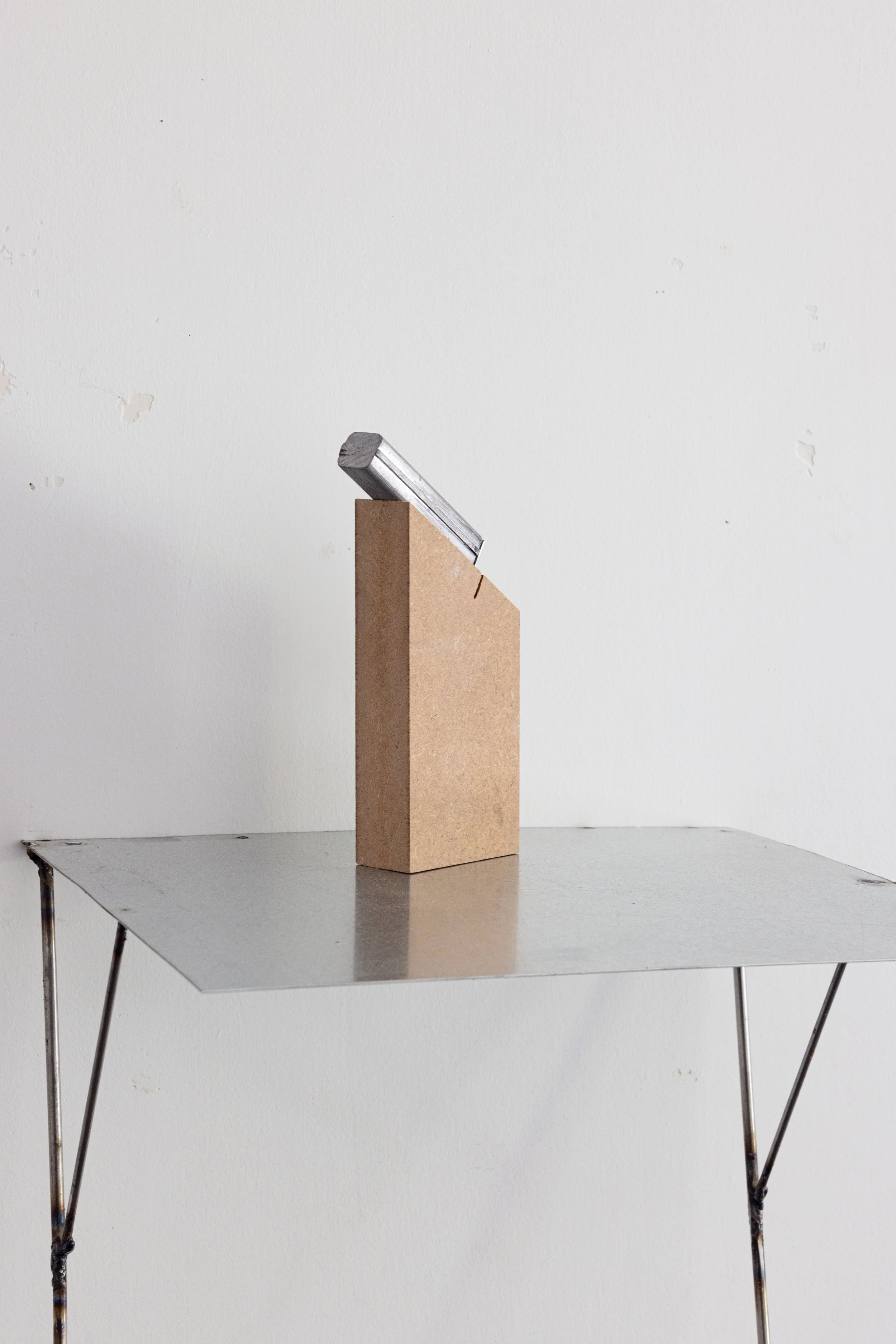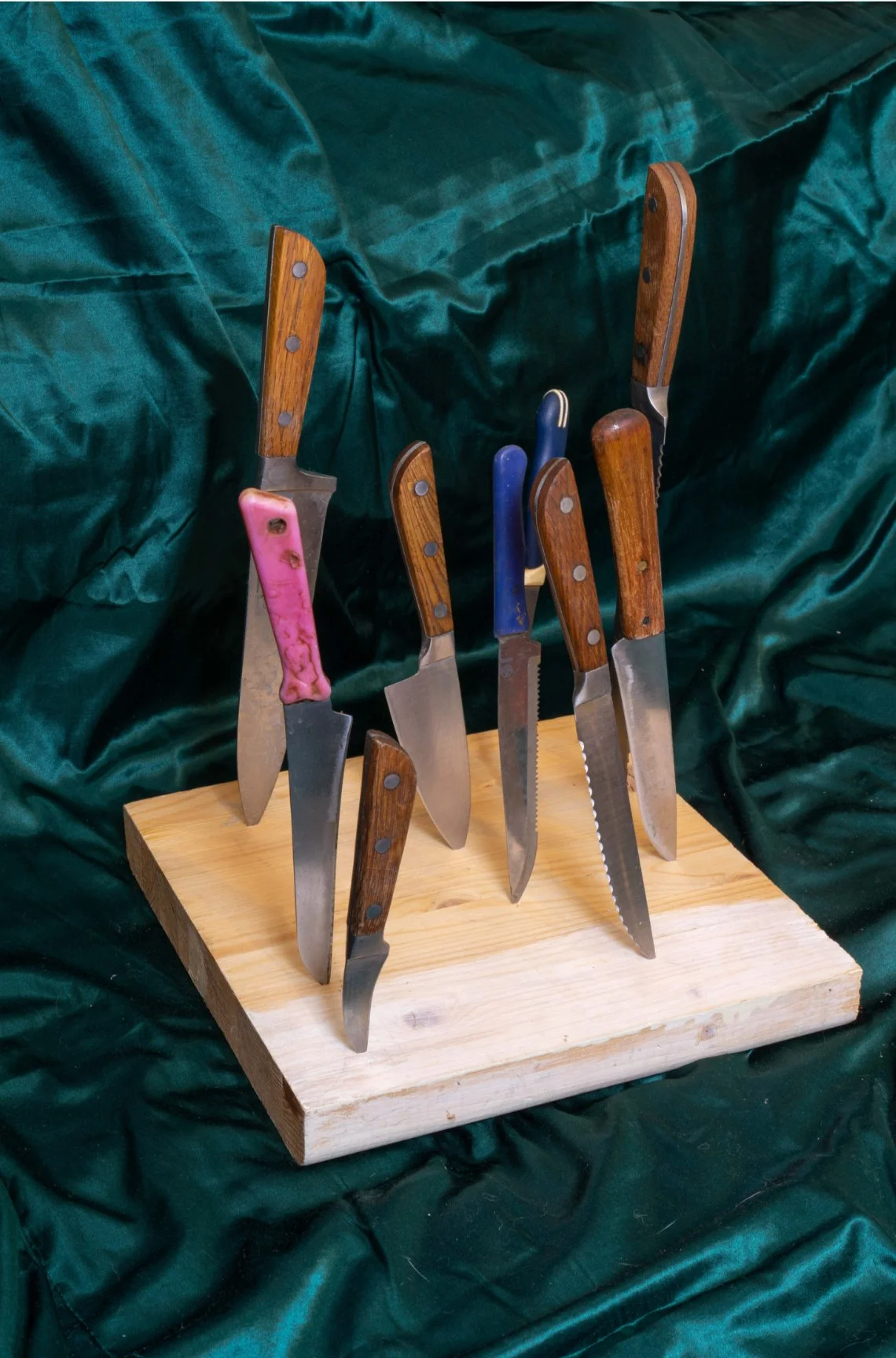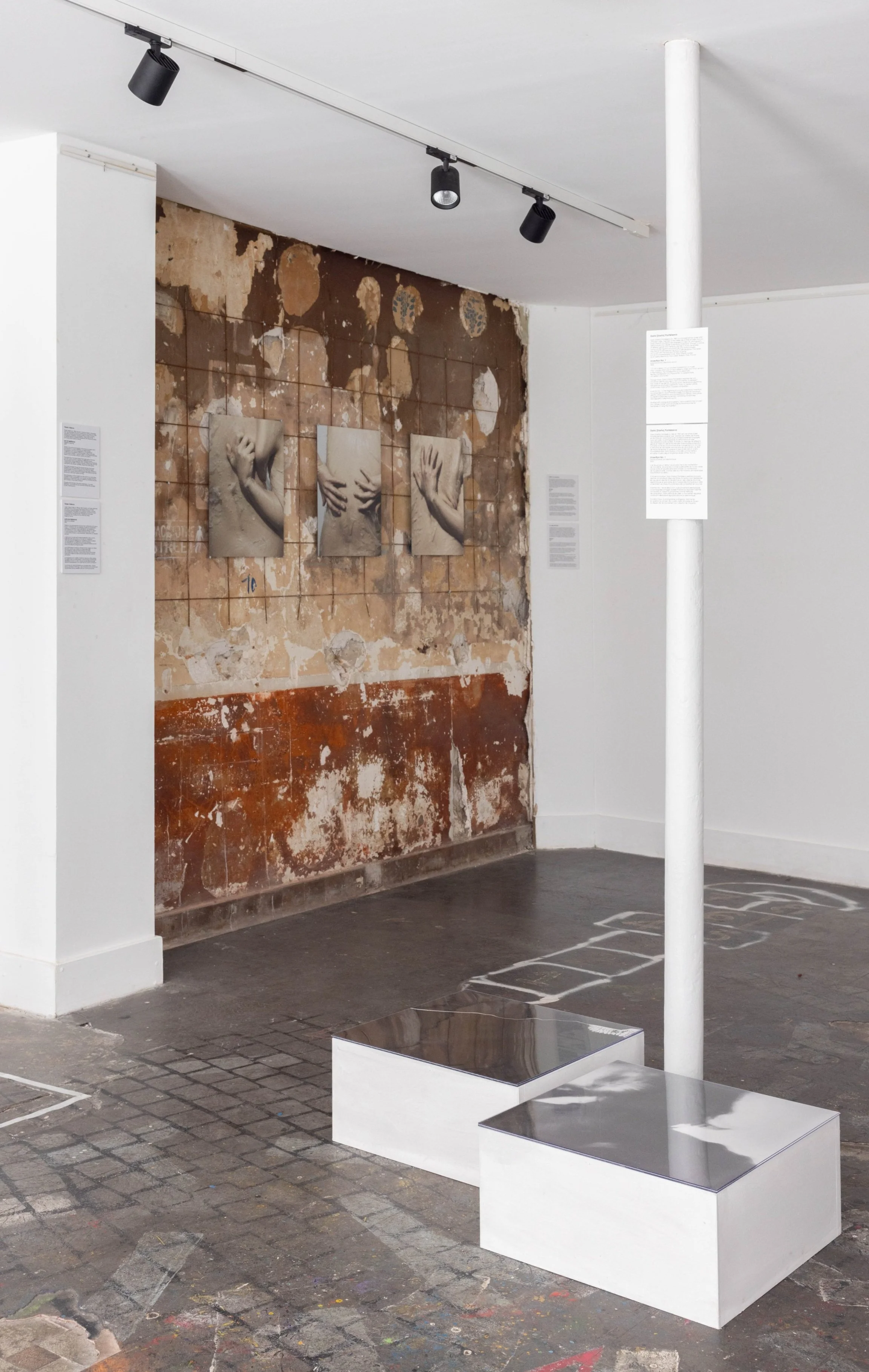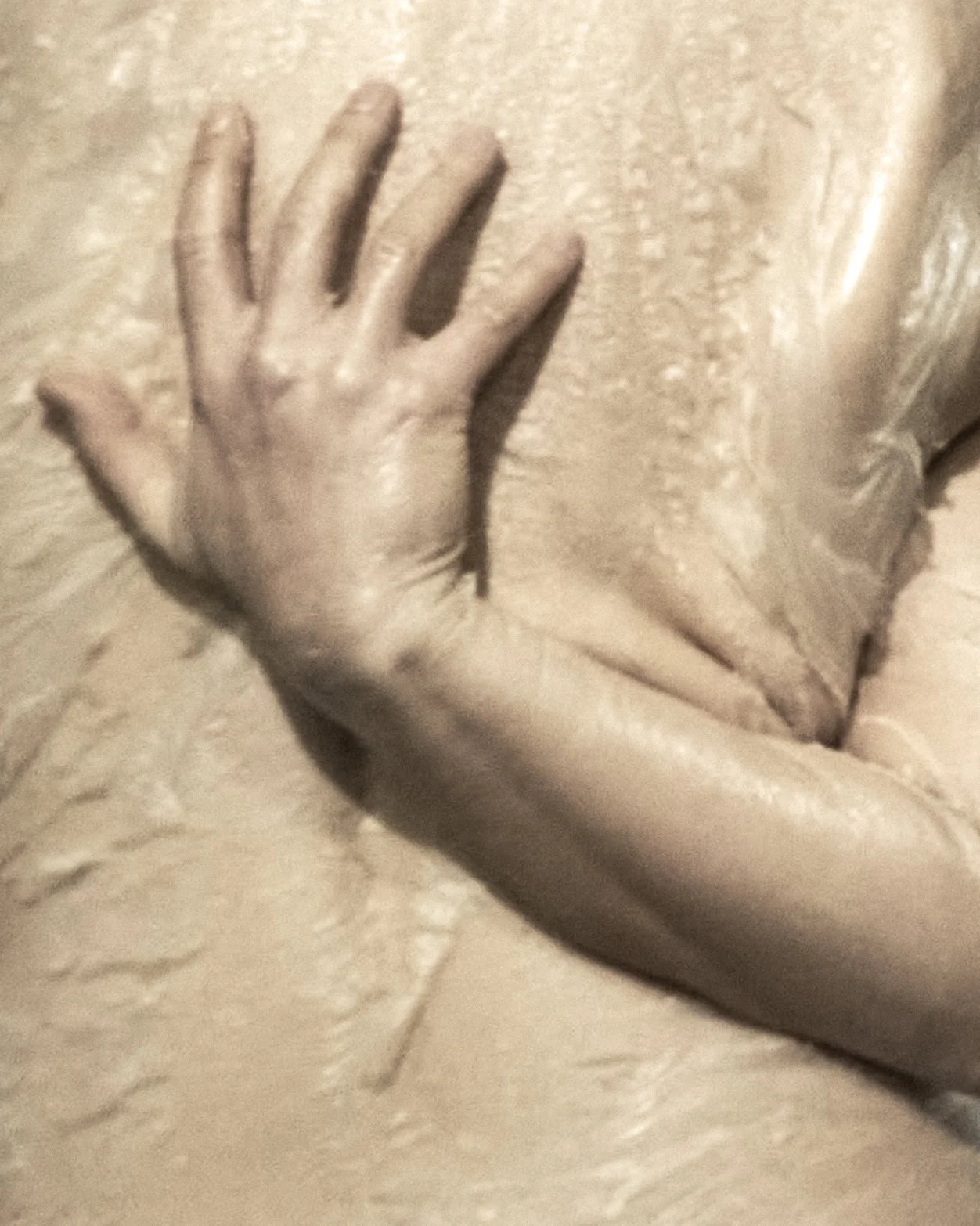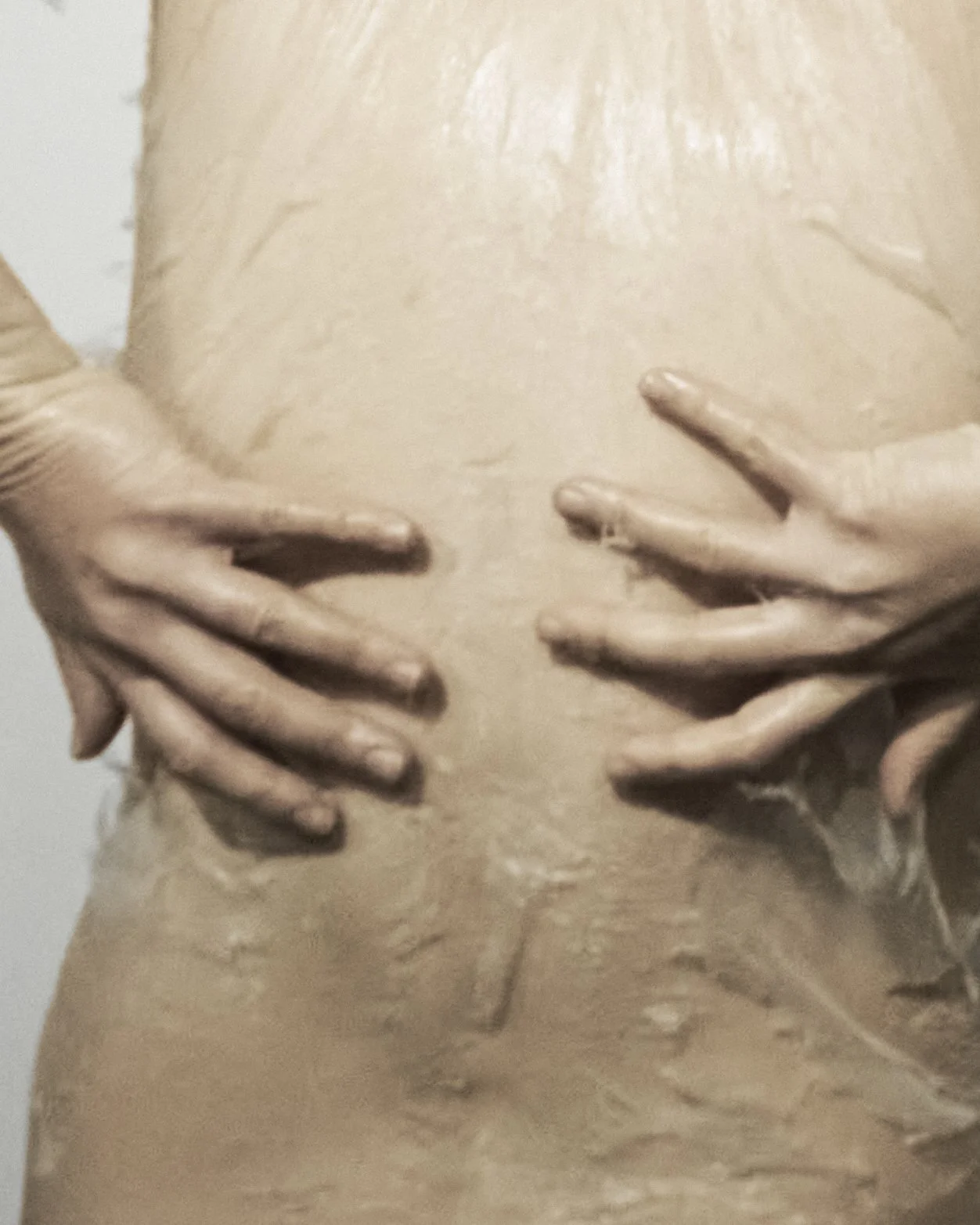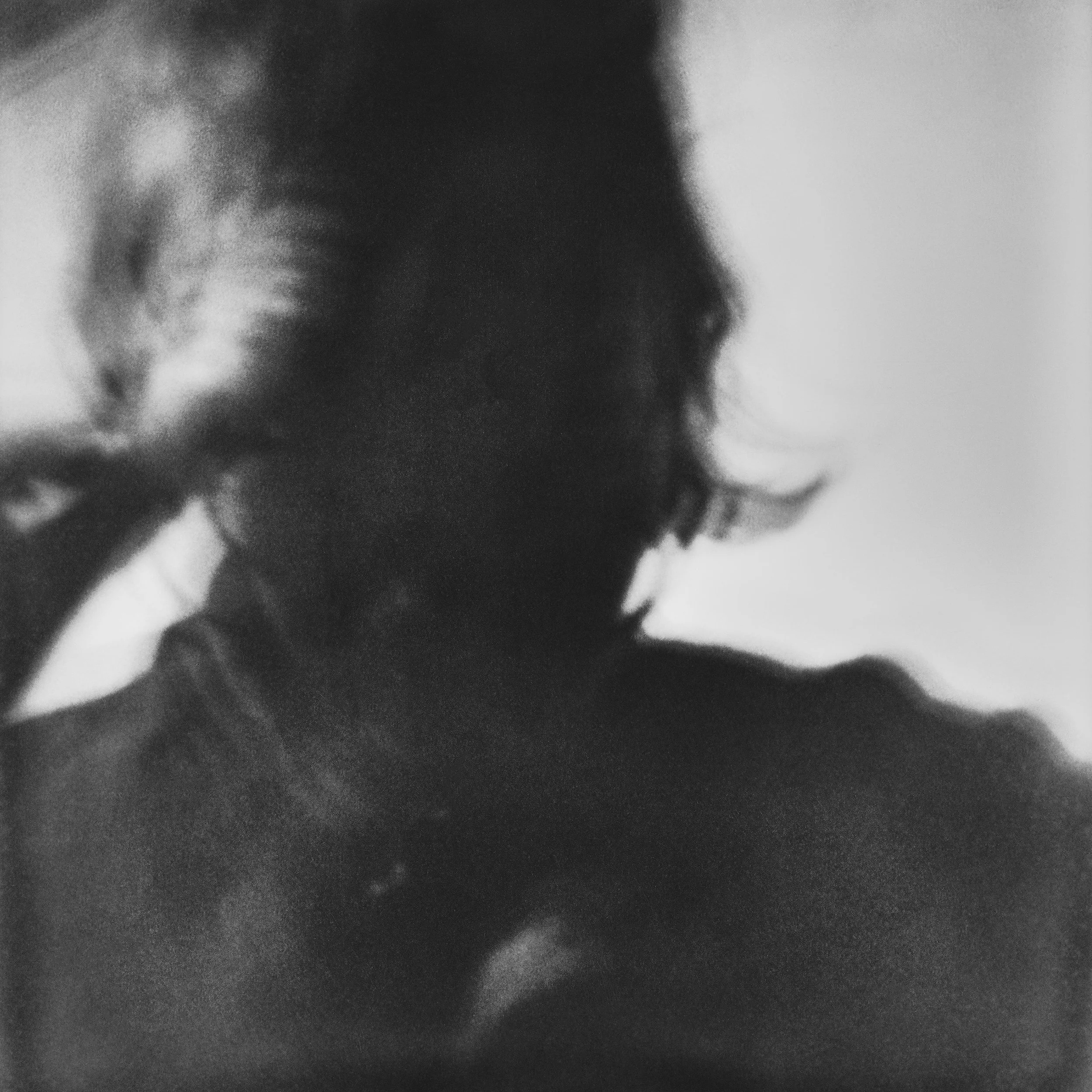EXHIBITION MANIFESTO
Spring is not just a season—it symbolizes transition. It is inevitable, even when winter seems endless. While it doesn't arrive on schedule, it emerges through resistance, rupture, and tension. This pivotal moment births a new system—fluid, chaotic, and beyond control. The fragile yet swift process lies at the heart of Spring Cannot Be Cancelled.
The project’s title refers to the book Spring Cannot Be Cancelled: David Hockney in Normandy, in which artist David Hockney observes spring breaking through the grey of the French winter. It serves as a reminder that change is inevitable. It is already unfolding, even if we aren't prepared to acknowledge it.
At the core of the exhibition is the Two Loop System, a concept developed by the Berkana Institute to understand social transformation. Every political, cultural, and personal system moves through inevitable stages: growth, peak, decline, and dissolution. However, on the periphery, a new system is already beginning to form—initially fragmented and almost imperceptible, but gradually gaining strength. For a time, both realities coexist: one has not yet disappeared, and the other has not yet fully emerged. We are living in this transitional space.
This theory aligns with Donna Haraway’s compost theory: the new does not arise in isolation; it grows from the remnants of the old, repurposed and reimagined, much like soil where decay and birth are inseparable.
Six artists in the exhibition explore this delicate balance, capturing it through material and visual forms. Their works embody acts of resistance and adaptation: political protest weaves itself into the fabric of the city, leaving a tangible trace. Like human experience, trees hold onto the past and return it in new forms. The ever-present gaze of an external observer turns the female body into an object—until it breaks free from the confines of stereotypes. Personal identity unfolds in layers—imperfect yet honest. The memory of parents transforms into a material language, where heritage is not just about objects but also about the process of reinterpretation. Even human skin becomes a metaphor for perpetual renewal, regardless of our will.
Spring Cannot Be Cancelled is an attempt to grasp the movement of transition. What will the new structures forming today ultimately become? How will they reflect instability while maintaining resilience? Where are their boundaries, and who defines them? These questions remain open, but within this space of uncertainty, we begin to discern the outlines of the future.
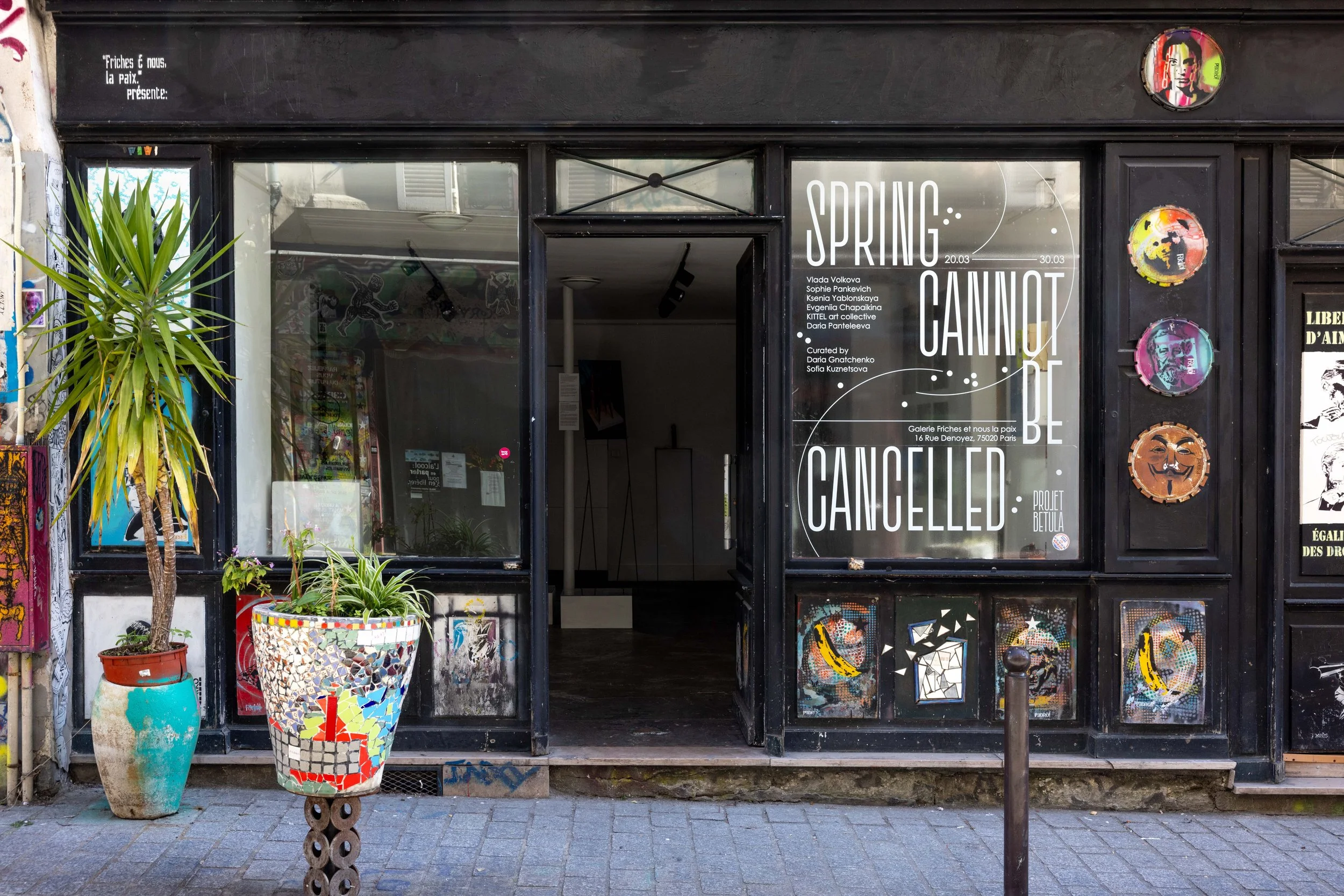


-
Vlada Volkova (b. 1998) was born in Moscow, Russian. Graduated from the Rodchenko School of Contemporary Art (Moscow) in 2022. Her artistic practice encompasses a variety of media, including photography, installation, and graphic. Vlada's work focuses on themes related to individual experience, the influence of politics and mass culture. Вased in France.
-
Plexiglass engraving
2025Based on an archival photograph of the Moscow protests in 2017, the installation is a visual meditation on political protest, its suppression, and the homogenization of the experience of resistance across different political systems. Using acrylic glass as the primary material, I create an object on the threshold between fixation, documentation, erasure, memory and oblivion.
The engraving on the glass renders the image elusive to the eye as if worn away by time or subjected to deliberate erasure. The technique visually references urban vandalism and conceptually underscores the fragility of historical memory: protests fade, and their participants often remain nameless, erased from public space.
The conflict emerges through the contrast between the sharply rendered face of a police officer and the turned-away figure of the protester. This dynamic speaks to the asymmetry of historical preservation: power is always immortalized, while resistance remains anonymous, dissolved in space and time.
The transparency of the material turns the work into an optical filter. This effect invites contemplation: can we ever truly grasp another’s experience, or does every past act of resistance inevitably become just a shadow in the current of history?
The glass panel alludes to the urban landscape — bus stops, billboards — structures that are constantly transformed yet persist in their underlying form.
-
Evgeniia Chapaikina (b. 1986) is an artist and photographer. Was born in Norilsk, a former GULAG city. Graduated from the Rodchenko Art School (Moscow) in 2015. Her artistic practice includes the use of media such as photography, video, performance, and installation. Her work examines gender inequality, patriarchy, parenting systems, and the impact of place on identity. Still life plays a central role in her practice; through it, she aims to transcend the sense of frozen life tied to her birthplace and the genre of still life itself, bringing energy and vitality to her works. Based in Paris, France.
-
Plaster, wood, iron, digital print
2025The question of self-identity haunts us throughout our lives. Once again, I asked myself this question when I found myself in immigration. Who am I, if not a mother, not a nanny, not a wife, not an artist? At some point, analyzing my artistic practice, I realized that the part of me that no one can take away or question is called "the engineer's daughter."
My father worked most of his life as an engineer at a copper plant, though deep down, he dreamed of being an artist and always engaged in creativity. As a child, I would visit him at work; he would take me through the workshops, and everywhere smelled of metal. The city where I was born is a small industrial town beyond the Arctic Circle, where metal is mined and processed. Sometimes, it felt as if I were breathing in the particles of that metal, and it became a part of my body.
In the work " the Daughter of the Engineer," I find and affirm my discovered identity. I establish a connection with my late father, turning memory into plaster casts of his belongings. Following Duchamp's legacy, I declare my father an artist by exhibiting objects found in his home. I inherit his engineering and artistic skills, ritually appropriating them and taking self-portraits.
-
KITTEL art collective is an artistic duo of life and work partners transdisciplinary artist Daria [Dasha] Panteleeva and dance artist Olga Kitaeva. Beginning as a collaboration between opera director and a choreographer in 2012 their artistic practice went far beyond music theatre. Their artistic practice includes the use of media such as sound, body and visual images, to create a new shared vision. In their projects Olga and Daria examine the impact of global problems on individual human beings and vice versa. Appealing to the intimate and personal, they picture fragility of the world. Based in Paris, France.
-
Dibond
2025The skin is the largest organ of the human body, covering approximately 1.6 m² and weighing around 10 kg. It is also the boundary between the inner and outer worlds, along which death lies. Thousands of epidermal cells die every hour, leaving traces of our existence behind.
Death is very material and mundane for artists Daria [Dasha] Panteleeva and Olga Kitaeva. It constantly surrounds people and is connected to human bodies. Without realizing it, people carry this burden of death through their hair, nails, and, of course, their skin.
It is believed that the full skin regeneration cycle takes 28 days. We can see its result in the form of flakes of dead skin cells that were recently part of us.
To make the process of renewal visible, the artists use PVA glue, applying it to the body of the performer to create a "second skin." The material was chosen deliberately. As a synthetic product, glue has a toxic effect. In this way, the artists emphasize the impact of the polluted environment on people's health and urge a more responsible attitude towards ecology.
The triptych format is chosen to emphasize the processual nature of regeneration. By creating a contrast between delicate fragments of glue skin and the physiological curves of the human body, artists address both aspects of death: its beauty and its ugliness.
-
Daria [Dasha] Panteleeva (b. 1987) is a transdisciplinary queer artist of Russian origin. Member of the Atelier des Artistes en Exile (France). Daria [Dasha] is professionally engaged in video art, photography, performance and creates audiovisual installations. Through a mixture of different genres and mediums, she tries to study the endless human protest against circumstances and world changes, the attempt to escape into the arms of self-deception, the desire not to part with the past and the fear of going into an incomprehensible future. Daria [Dasha] worked as an opera director for many years. Based in Paris, France.
-
Polaroid photos, electronic sound
2025
“I'm not a defect, I'm just another manifestation of myself. Only I choose which part of me is visible to others and which remains in the shadows. The manifestation of my personality, like the manifestation of a Polaroid film, is unpredictable, not perfect and honest.”Through music, Daria [Dasha] Panteleeva explores her own non-binary identity and uses a form of invention to represent the voices of her identity. Studying sound, she employs algorithmic and granular structures in electronic music to create a sense of structured chaos within a layered composition.
Invention No. 1 is the beginning of a cycle of electronic inventions accompanied by visual Polaroid images that explore non-binary identity. Using polyphony as a compositional
method, Daria strives to create a balanced movement, combining randomness and regularity in electronic sound.Working with analogue photography, Daria questions the concept of a “broken frame” and advocates for the environmental friendliness of using the imperfect.
-
Ksenia Yablonskaya (b. 1991) was born in Minsk, Belarus. Graduated from Rodchenko Art School (Moscow) in 2021. Member of the Atelier des Artistes en Exile (France). In her artistic practice, Ksenia uses photography as the primary medium, as well as sound, installation, video and rethinks the circumstances of the external world that influence a person's experience and self-perception. Based in Paris, France.
-
Pigment print
2025
The work "Don't Look, Don't Look Away" is a visualization of conscious and unconscious female experiences — fears, insecurities, and tensions born from prolonged objectification and sexualization of women. As a result of prevailing stereotypes about the female body, appearance, and behaviour in various situations, women experience persistent dissatisfaction with themselves, unable to meet all the imposed standards and expectations.On one hand, women are shaped by an endless pursuit of perfection and relentless self-censorship. These forces take a destructive toll on their emotional and psychological state, preventing them from focusing on cultivating inner and outer harmony, instead forcing them to see themselves through the lens of others' expectations.
On the other hand, the patriarchal world continues to create an unsafe environment where women still lack full rights, freedom, protection, and bodily autonomy. In response, a collective unconscious female fear emerges — passed down like an instinct from generation to generation, compelling women to live in constant anticipation of danger.
All these factors deeply affect female sexuality: women become restrained, losing an intimate connection with themselves and their partners, struggling to reach the "petite mort" (French for "little death" — orgasm).
The sound of voices accompanies the photographic series. The author's words are the voices of women (and people identifying as women) who participated in an anonymous survey about gendered upbringing, self-identification, perceptions of sexuality, violence, and discrimination. It is an inner voice that makes us doubt ourselves or, conversely, compels us to silence our fears.
-
Sophie Pankevich (b. 1996) is an artist, photographer. Was born in Moscow, Russia. Graduated the Rodchenko School of Contemporary Art (Moscow) in 2019. In her photography practice she use alternative hand printing processes such as mordançage, lithprint, cyanotype, and liquid emulsion, also works with digital photography, toy camera and portable printer. In her work, she examines the concept of randomness and explore the transformative process of turning flows into strength. Вased in Paris, France.
-
Liquid emulsion on steel
2021Trees remind me of human life—their branches intertwine, forming patterns of lived experiences. Sometimes it feels as though nature is speaking to you, filling the space with pure, untainted energy. In its forms, I find images that resemble stories left behind by time. What we’ve lived through remains with us, taking root and changing, like a tree or a pattern on a stone. By embracing the power of nature, you begin to feel yourself as part of its endless rhythm.
The photographs, printed in Russia in 2021, felt like frozen memories in a museum case. For almost two years, it stayed closed. When I opened it in France, I saw something that can rarely be seen or touched—time itself: on the stainless steel, where the prints rested, rust had appeared. Perhaps due to temperature shifts or a lack of oxygen. But it’s not about the causes—the works had taken on a life of their own.
In this manifestation, I saw magic. The material rusts, but its essence doesn’t disappear—just like life. A new chapter began in France, while the old one, left behind in the past, slowly became covered with the patina of time. But rust is not destruction, it’s transformation. The material changes, but its essence remains. So it is with us: the external grows old, loses its form, while the inner essence continues to evolve, gaining new facets.
